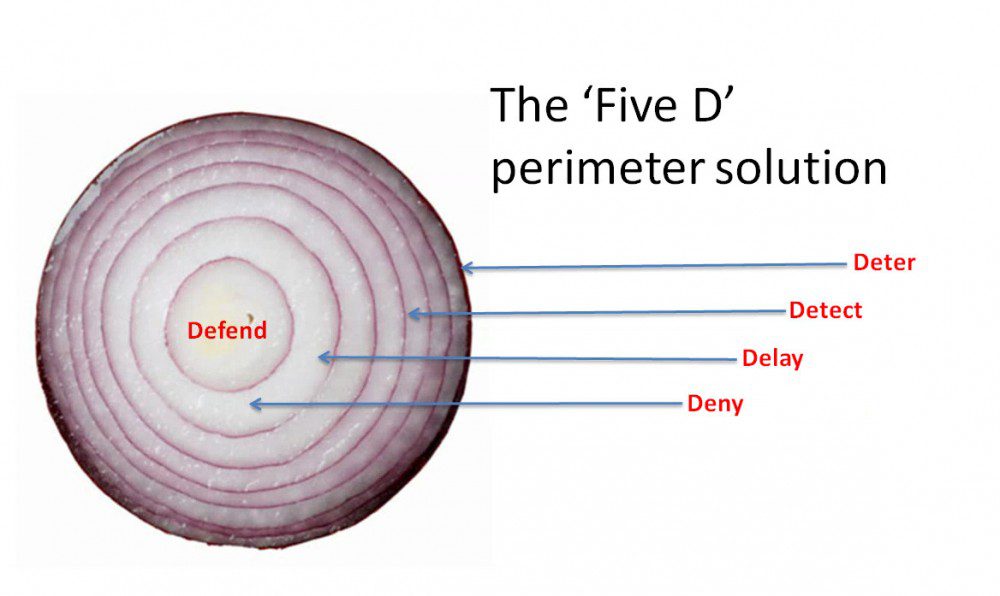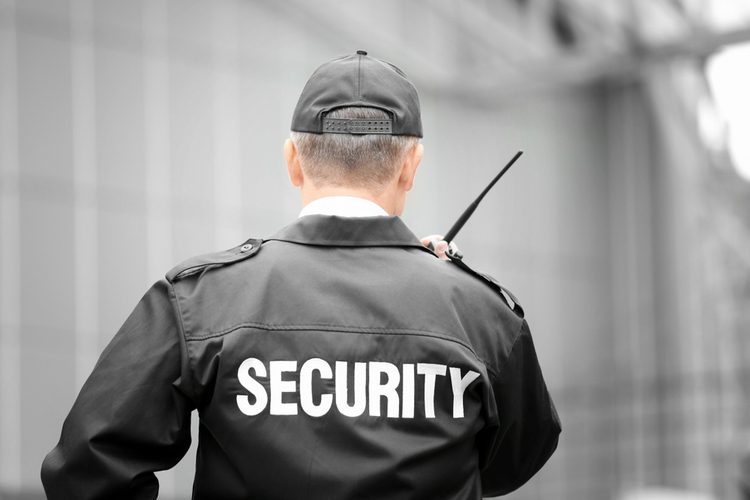SECURITY OPTIONS FOR YOUR DALLAS-FORT WORTH BUSINESS
If you are reading this article, chances are that you fall into one of two categories. Either something has already occurred at your place of business that is now leading you to take steps to ensure history doesn’t repeat itself OR you are proactively taking steps to safeguard your investment before becoming a victim. Regardless of how you got here, you are already light-years ahead of so many others who still live in a bubble; thinking that they could never become a victim of crime. Where should you begin? How will you decide what’s right for your business and individual needs? Should you hire security guards? If so, should they be armed or unarmed and how should you decide on any one company? Should you just invest in an alarm system or maybe a high-end video surveillance system? Or would a high fence and upgraded locks meet your needs? As with most answers….it depends. The aim of this article is simply to explain which elements, when used together, form a complete approach to security, how to prioritize your security concerns, and hopefully give you a solid place to start you on your path to making a decision on the right security program for your needs.
When trying to make a decision about what security option is best for you, it is important to first understand the elements or the “5 Ds” that make up a complete and ideal security system – DETER, DETECT, DENY, DELAY, DEFEND.
DETER: To put it simply, you would ideally want a system in place that offers an element that first and foremost deters would-be-criminals from committing a crime at your location in the first place The bad guy just looks at your location and decides it would be best to just move on down the road and look for an easier and less risky target. This could be anything from visible security cameras to on-site security officers, security lighting that makes it difficult to hide from detection, or physical barriers such as fences and walls. Even posted signs such as “Smile, you’re on camera” is used to serve as a mental deterrent.
DETECT: Next, you would have a means to detect the presence of the intruder so that someone knows they are there and can take action. This is typically accomplished through the use of monitored video surveillance or various monitored alarm systems. The purpose of detection is so that an immediate physical response can be sent to meet the threat.
DENY: If the intruder was undaunted by the security systems in place and decided to try their luck anyway, the next element is to have an implemented design to physically prevent their access using a physical barrier such as well-designed security fencing or quality doors and locks.
DELAY: If the above-mentioned barriers don’t completely stop the criminal’s advances, it is still a success if it serves to slow them down long enough for a physical response (security officers) to arrive at the proper location.

DEFEND: Lastly, we have the human element of the security system. A physical response from a security force to locate and address the threat and either scare them away or detain them until the police can arrive on scene. A physical presence is also the only element that could potentially serve to meet all elements by itself.
Again, these elements make up a complete approach to a security system but they are not always necessary for every client. Keep in mind that a fence alone won’t always keep someone out; a video camera with no one watching will not stop a crime-in-progress; an alarm that isn’t monitored won’t trigger a response and alarms monitored by an off-site agency rarely bring help until after the criminal has already left with your property. Security guards are great but they have to be alert and in the right place and take appropriate actions.
So how does this help me make a decision??? Well, depending on what you need to protect, one or all of these elements may be appropriate for you.
First, you need to figure out what the primary security concerns are for your business. Is it a burglary with valuable materials being stolen? Damage to a company server? Vehicle break ins? An active shooter or an act of work place violence? List these all out on a piece of paper beginning with those that would be MOST detrimental to your business and end with those that would be considered an acceptable loss. Next, assign each of those concerns a number (1-6) ranking the likelihood of it actually happening. Then assign a letter (A-F) ranking the negative effect that the event would have on your business.
| Likelihood | Negative Effect |
| 1. Certain | A. Fatal |
| 2. Very Probable | B. Very Serious |
| 3. Moderately Probable | C. Moderately Serious |
| 4. Probable | D. Serious |
| 5. Improbable | E. Acceptable |
| 6. Unknown | F. Uknown |
Using this system, you would then prioritize the order in which you will address the concerns based on how serious the concern is and how likely it is to take place. We always suggest starting with anything listed as fatal, regardless of the likelihood of it happening, but perhaps you will start with something listed as very serious (could completely shut down business) but that is very likely to occur.
An example would look something like this:
| EVENT | Likelihood | Negative Effect |
| Active Shooter | 4 | A |
| Damage to servers | 3 | B |
| Night time burglaries | 3 | C |
| Employee theft | 2 | C |
| Vehicle burglaries | 2 | D |
In the above example it would be more appropriate to focus on having an armed guard present while employees are in the building and then focusing on denying access to the building (particularly the server room) before worrying about putting a fence around the parking lot.
Once you have your list in order and know which concerns you need to address first, you can start to think about which security options are right for those concerns and weigh the cost of the possible loss against the cost of the security solution and think creatively. Using the server as an example – if that is your only concern that is not listed as an acceptable loss, it would perhaps be more appropriate to consider the security of one particular room in your building as opposed to an entire property. Instead of fences and motion alarms and security personnel, your focus can be on wall material, doors, locks and access control policies for one room. If cost allows, then maybe even an alarm and or a camera for that one room where the server is stored. Or maybe you need to look into revising your written policies on who is given keys. If your only real concern is vehicle break-ins, you can limit your focus to the parking lot or garage. If your concern is one of violence such as an active shooter, then your best solution is always going to be an armed security presence and understand and accept that things like security cameras and alarm systems will have zero role in preventing or stopping that threat.
Now the fun part for all the CFOs… you’re going to have to spend money…there’s no way around it! In this profession, just like any other, you get what you pay for. And yet my mind is still continuously blown by the fact that security is the one area where businesses seem to decide that they want to save the most money. Day in and day out, I see companies whose primary concerns are millions of dollars in property loss yet they hire the lowest bidder security service to design and implement their systems and companies who are worried about loss of life and yet they hire the lowest bidder providing armed guards! Either you’re concerned about these threats or you aren’t. And if you weren’t concerned, I feel confident that you would never have made it this far into the article.
So, you have made your list of threats to your business and you know what you need to address and in what order. You also understand the elements of a security program that are available to you and how they work together. You also know that you need to figure out a security budget that makes sense compared to the potential loss but not so low that you are throwing away your money on the lowest bidder while in effect still risking the same loss.

If you decide that security officers should be part of your security system be sure to check online reviews (are all those stars that they have from legit looking clients or are they employees saying “I like it here”?). Call references and then…this is a big one…visit a location or two, if accessible to the public, where the company has officers on site and see them for yourself. Do they look professional? Are they paying attention?

If you decide to invest in a video surveillance system find a reputable company that will let you try their product at your site and see if it will meet your needs. How far does the camera need to see? Is the quality such that you can obtain clear images that could actually identify a person and be used for prosecution or just show a blurry figure? If you need the camera to record in a dark room or outside at night, viewing it in a bright store tells you nothing. Do you need the camera to rotate to cover a larger area or zoom in? Make a list of everything you will need the camera to do before visiting a dealer. Review their plan to install the cameras and confirm that the chosen placements make sense or hire a security consultant to do this for you.

For lighting, consult a company that specializes in security lighting. They will send a consultant to your location and discuss your needs and help guide you in the proper placement of lights. If you are installing lights in addition to a surveillance system, discuss concerns with the consultant about installing the lights in a fashion where they do not alter the video image (lights should be installed ABOVE security cameras).
I hope this article has provided a basic starting place for you to begin the decision process of implementing appropriate security measures for your business. To learn more about our professional security consultation services and how we can help you in this process please CLICK HERE
